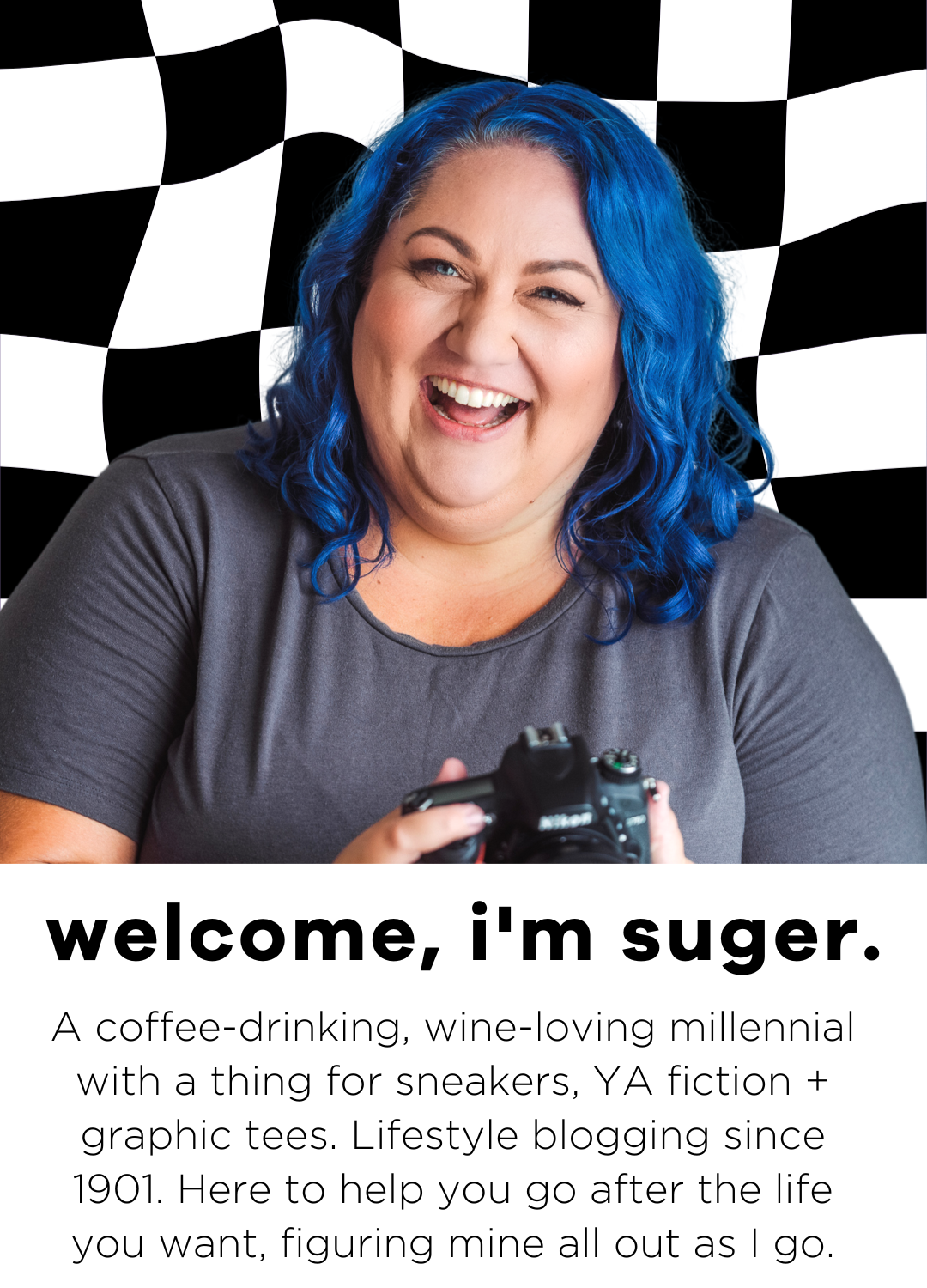As far as YouTube achievements go, this feels like the first one. 100 subscribers, I’ve now officially made it. Small pickings by a lot of channels standards, but a milestone achievement none the less. When I started posting regularly in August this year, I certainly didn’t expect to be here already.
I’m a blogger and small business social media coach, so I applied a lot of those same methods to growing my channel. This post is for those of you wanting to do the same thing, or who are curious about such things. It’s especially for those who thought that maybe someday they might start but who are a little worried that no one would ever watch.
Same.
But, they did. Not in droves, and I certainly won’t be rivalling the big guns anytime soon, but they did show up. With a consistency that is both charming and motivational. From everywhere. From the blog, from YouTube search, from browse functions and other social media. Thank goodness, because there’s no hiding your success or failure on YouTube. It’s there for everyone to see.
The main thing I learned being a blogger who started YouTubing, is that not everyone who reads your blog or enjoys your photos on Instagram are interested in your videos. Perhaps even fewer will take the time to move from Facebook to YouTube to watch them. And that’s okay; people have their ways to consume media.
That point, about people viewing media where THEY want, is worth keeping in mind if you decide to start a YouTube channel. I had no idea who Casey Neistat was until I started getting interested in YouTube. It’s one of those platforms that you’re either into, or not. So, don’t expect your existing audience to care automatically. That doesn’t mean they won’t. Keep sharing on whatever platforms you have available to you.
Don’t have an existing audience? Start to build one just as you would for business, a blog or a brand. Your YouTube channel needs that support from social media to drive traffic. I learned that. YouTube rewards those who can bring the audience to them, so you need to be doing that for every single video, or it will crash and burn into YouTube obscurity.
Which is a big pile, let me tell you.
Then, there’s the whole your content probably sucks thing. New to making videos? The sucking thing, yeah, that is probably you especially if you haven’t invested a lot of time into learning the tricks of the trade. When I started out, I thought to get on or behind the camera would be the hard part. It turns out to only be a quarter of what’s going on.
Learn as much as you can so your content is the best it can be. The best way to do this, in my experience, is to choose a posting schedule and stick to it! Practice makes perfect, right? But done is better than perfect. I’ve learned a lot by just doing it and getting my videos out on a regular schedule. I did my best to determine the best ways to deliver it. Which meant watching a whole heap of tutorials about using, at first, iMovie, then Adobe Premiere Pro.
Like anything online, consistency is critical.
When I was creating content, I tried to figure out who would be interested in it. Everything from the actual video material to the supporting shares or blog posts, to the titles and thumbnails of the video. Since I started back in August, I’ve changed some of my thumbnails three times. Not ideal. But also important because I learned better ways to do things.
Another thing that “just showing up” did for me was to put me in front of the camera week after week. Sometimes on multiple occasions just to make the one video. I’d practice recording with my camera, my webcam and my iPhone 7+. I learned how uncomfortable I could be in front of the camera and how often I say um or so. I pity Samara and all the work she has to do with our podcasts now. Haha.
Thanks, Samara, I owe you one.
My next lesson was that sound is almost, if not more, important than the actual video quality. I found that people left my videos faster if there was s sound issue. So, I made videos where I could use my podcast microphone. This strategy worked fine for the social media posts and blogging tutorials. But it wouldn’t work for moving content. After about a month, I purchased the Rode Video microphone; the little one, not the boss pro one. I’ve used it once so far, so it’s hardly been essential.
Which brings me to the next point. The gear, while it does impact your end result, shouldn’t stop you from making something. As I mention in the video, I’ve recently upgraded my webcam as a sort of reward for the work I’ve put in so far. But I didn’t need any of it to start. And you don’t either. So, forget the excuse that you don’t have the right gear and get started creating.
And that is some of what I’ve learned in my first three months as a YouTuber.
3 months, 20 videos, 100 subscribers and countless hours of fun, frustration and f-bombs. Thanks for coming along for the ride! If you’re on YouTube, I’d love to have you join us. Leave me a comment or a like, the algorithm over there likes that kind of thing, apparently. If not, I’ve embedded this video below. Enjoy!
Hi! I’m Melissa Walker Horn. Around here, they call me Suger. I’m the Chief Blogger and doer of all the things here at Suger Coat It. Blogging since 1901; I love a casual ootd, taking photos, and writing about things that irk or inspire me. I love wine and cheese, long days at the beach and spending time with my family. I make stuff for the internet over at Chalkboard Digital. You know, living the sweet life.





I admire anyone that YouTubes! It is something I would not be capable or comfortable doing!
I’m not a regular YouTube watcher due to the time commitment it takes as opposed to reading a blog which is a lot quicker usually but when I see YouTube links for topics I’m interested in I do watch them.
Heading over now to check your YouTube out.
Ingrid
http://www.fabulousandfunlife.blogspot.com.au
Thank you, Ingrid, I appreciate you checking it out. It’s been an interesting journey, that’s for sure.
I get that. I have designated times for video watching for that reason. All the requirements that have to fit together. Not to mention, it usually requires sound which requires some level of privacy… All the things. Haha.
The whole video thing petrifies me. I’ve contemplated doing it for the astro site, but …well, there are a lot of buts. I’m in awe of you.
Can I tell you, same! It’s taken me ages to get here and even longer to feel even remotely myself on camera. But, it gets easier. It’s still awkward AF, but it gets easier. Haha.
Awesome! Well done Sugar 🙂 It’s something I keep toying with but then I think oh crikey there’s so much to learn – like you say 🙂 Thanks for the tips today. I’ll be bookmarking this page 🙂
There IS a lot to learn. I’ll acknowledge that 100%. But none of it can be learned in books or blog post or even watching tutorials or videos. This is one thing that you just have to start doing and learn as you go. I’m glad the post helped. Good luck to you.
I keep toying with using YouTube to do my book reviews but I’m not sure. Everyone I seem to watch does look so professional. I might try your techniques and see how I do…thanks for sharing x
Emma, I thought that too but after a while of watching and diving deeper in, for every slick, professional produced video there are hundreds of people learning and trying. I love that. Video always interested me, I just could never get across the line. Ripping off that bandaid and having a plan to stick to helped.
Congrats! That’s a great achievement – you seem really focused. I’m not at all comfortable talking in front of a camera – but as you say practice makes perfect. Thanks for the motivation x #Lovin’LifeLinky
Thank you! Focused is a generous way to put it. Haha. When I get into something new, I get obsessed. Youtube is no different. Good luck with your videos. And it’s true, practice is the only thing I’ve found to work so far. 😉
Well done Suger. You’ve really achieved a lot in such a small amount of time. Also thanks for the tips on YouTube. #TeamLovinLife
Thank you, Kathy! I’m happy with everything I’ve been able to learn and achieve in the last few months. What a learning curve though! Gosh.
Well done and congrats – I can’t imaging having a youtube channel or doing live videos – I can’t even do them on Facebook so you have my absolute respect 🙂
Thank you, Leanne! It’s something to get used to doing, that’s for sure! It took me 4 years of having it ‘on my list’ to finally get started. And even now, I don’t really go Live other than on Instagram Stories or the like. The disappearing factor helps with the nerves, I think. Haha.
Congrats, Melissa! And I love the new look of your blog. I’ve loved all of your looks, actually.
SSG xxx
Thank yoooou! There’s something so satisfying about reaching a milestone like this. And thank you again for the blog love. I’ve been tweaking this layout for a little while now and I think it’s almost there. But you know this blog, it’ll change again sometime soon and that’ll be half the fun. Haha.
You’re such a professional Melissa! I did a couple of things from my laptop and use my iPhone occasionally to interview my friend’s little boy for book reviews. I like the idea of switching media (as in mediums) though. I still love writing but would perhaps keep it for the more personal stuff or creative writing and switch to podcasts / vlogs / FB live for book reviews and stuff. But in all honesty I’m too lazy to organise the equipment I need and I still haven’t worked out how to edit them properly. They take forever and then hours to upload a 3min clip to YouTube! #teamlovinlive
Thank you, Deb! I try to take these things seriously and do them ‘properly’ so I appreciate that. I’ll have to check out your book reviews. That sounds really great to me actually. Podcast or video or you can create both if you do a video with decent audio. Happy to help you set that up if you want.
It’s such an interesting media. From what I can tell it comes down to effective storytelling in the end which has been an excellent lesson for my writing as well. Not to mention how necessary it makes planning, which is something I tend to rush through or skip all together.
Consistency. Bah 🙂 I am having fun the few times I do make videos though.
Haha. You can be as consistent {or not} as you like if you don’t care what the YouTube algorithm thinks of you. Promise.
Congrats on your first 100!
Thank you, Alexa! x